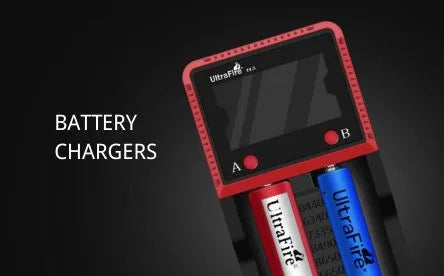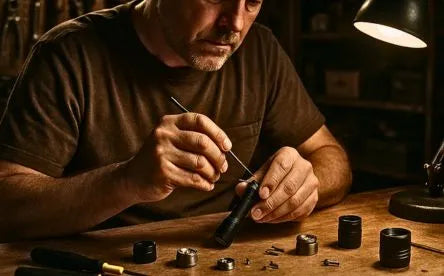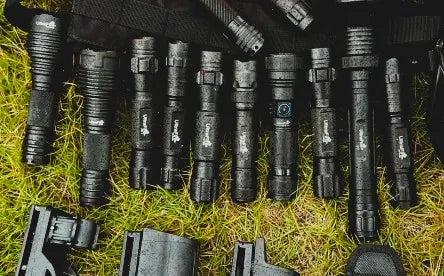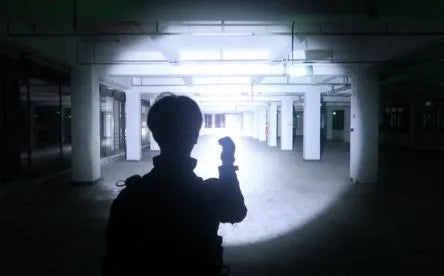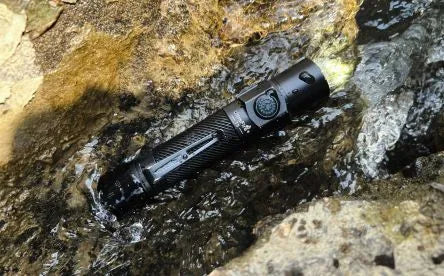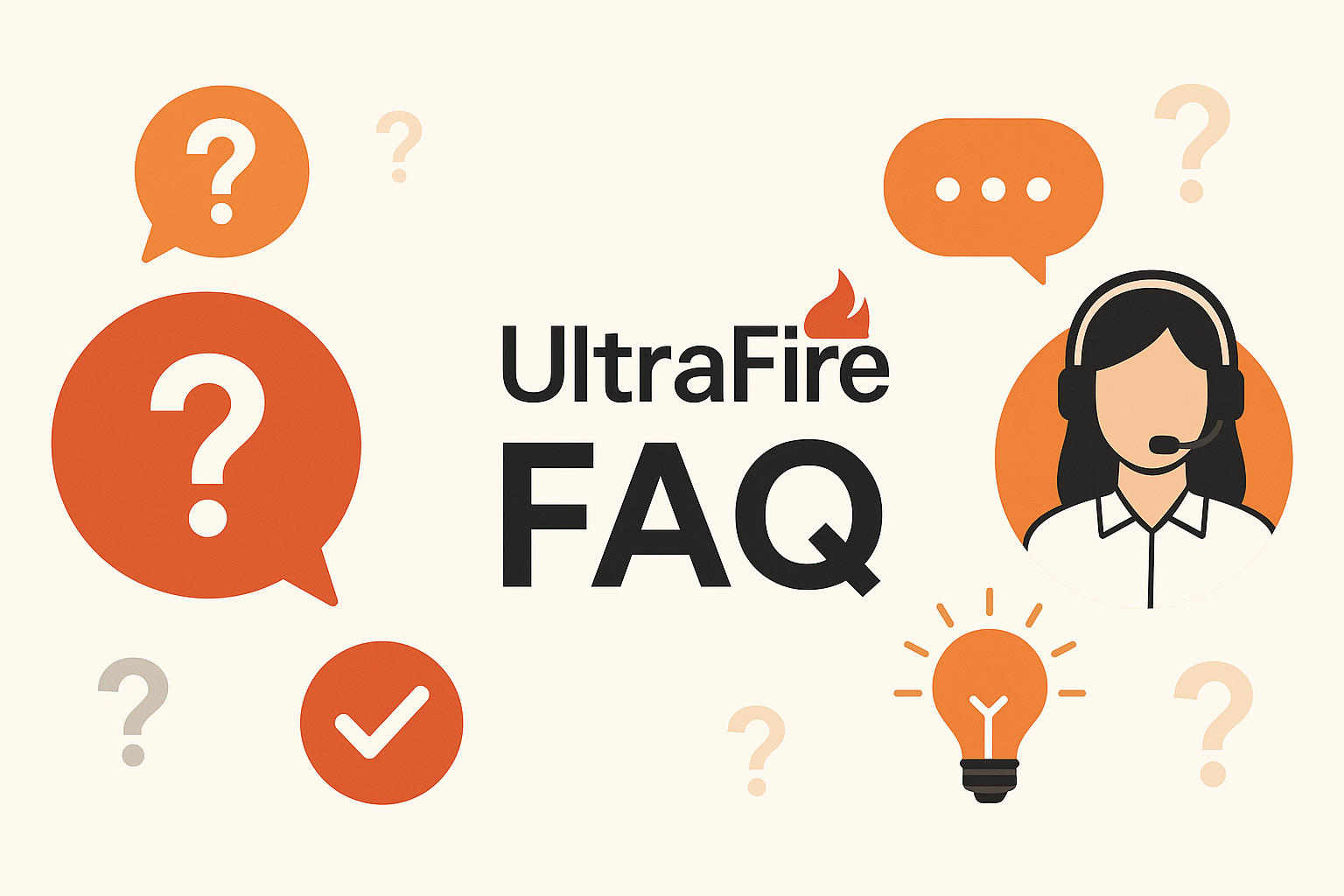In practice, this depends on design details: the light source’s power, how it’s focused by reflectors or lenses, and how much power the battery can supply. We’ll break down the key design factors (LED brightness, optics, power source) and show how they play out in real-world use.
Modern LED flashlights can throw very far when designed correctly. For example, a hiker in dense woods might aim a narrow spot beam into the distance to see trail markers, while switching to a flood mode to light up the campsite nearby. Beam distance depends first on brightness: a high-output LED (measured in lumens) generates more light to throw far. It also depends on optics: a smooth, deep parabolic reflector or focusing lens concentrates light into a tight beam, whereas a shallow or textured reflector spreads light for wide coverage. Finally, the battery and driver determine how much power can sustain the LED at full output. A strong battery (or multiple cells) can keep brightness high and extend the useful range.
Key Design Factors

-
LED Brightness (Lumens): High-performance LEDs (like Cree XM-L, XHP70, etc.) emit intense light. A brighter LED means more light to focus, so higher lumens generally give longer beam distance. For example, a 1800-lumen LED can reach much farther than a 300-lumen LED all else being equal. Modern flashlights often list “lumens” and beam distance together.

-
Reflector Shape: The reflector (shiny bowl around the LED) directs light. A well-made smooth parabolic reflector sends rays in parallel, creating a narrow spot beam with long throw. In contrast, a textured or shallow reflector scatters light for a wide flood beam at shorter range. In practice, many flashlights use a deep smooth reflector or a Total Internal Reflection (TIR) lens to maximize distance.

-
Lens Optics: The clear cover (lens) at the front can further shape the beam. Specialty glass or plastic lenses, sometimes aspherical, fine-tune focus and reduce scatter. Some flashlights are focusable/zoomable, meaning the lens and reflector move relative to each other: sliding the head can change from a tight beam (for long distance) to a wide flood (for close work). High-quality optics can dramatically improve throw by minimizing aberrations.

-
Beam Angle: The combination of reflector and lens defines beam angle. A narrow (spot) beam illuminates far but covers less area, while a wide (flood) beam lights up nearby surroundings. Many tactical/outdoor lights offer adjustable focus to let users choose depending on the need.

-
Battery Output: The battery’s voltage and capacity affect sustained brightness. Flashlights with high-voltage lithium-ion cells (e.g. 18650 or 21700 cells) can drive powerful LEDs to full output. A higher-capacity battery or multiple cells provides more current and longer runtime, keeping the beam intense farther out. Underpowered batteries or those with lower voltage will dim the LED and shorten beam distance.
Inside the flashlight head, light rays hit the reflector and pass through a lens or glass. A deep, polished reflector will aim those rays in parallel for a far-reaching beam, whereas a shallow, diffused reflector produces a wide “flood” pattern. In the photo above, you can see the flashlight’s lens focusing its glow. Advanced flashlights use aspherical lenses or specialized TIR (Total Internal Reflection) optics to refine the beam. In short, reflectors focus the light into a tight beam (long throw) and lenses protect the LED while also helping shape the light for the desired pattern.
Power and Batteries

The power source must support the LED’s demands. Standard AA or AAA cells (alkaline) are convenient but have limited output compared to high-drain Li-ion cells. Modern tactical and hunting flashlights often use rechargeable 18650 or 21700 lithium-ion batteries, which deliver higher voltage and capacity. For instance, a 21700 lithium cell (5000mAh, ~4V) can sustain 1800 lumens for minutes, whereas AA batteries would quickly dim. A good driver circuit also regulates current: advanced flashlights use efficient boost/buck drivers to maintain steady output until the battery nears depletion. Overall, more robust batteries translate into stronger beams and longer range.
Beam Patterns: Spot vs. Flood

Different tasks call for different beams. A spot beam (tight center) is ideal for distance – it throws light like a laser pointer (but not coherent, of course). A flood beam is like a wide flashlight cone lighting up the periphery. Many flashlights offer multiple modes or zoom to give both. In general:
-
Spot/Long-Throw: Parabolic or mirrored reflectors, small LED die (for high intensity), and aspherical lenses focus light for hundreds of meters. This is common in searchlights and sniper flashlights.
-
Flood/Wide: Textured reflectors or diffusing lenses spread the beam broadly (good for walking around camp, reading maps, etc.). Flood beams sacrifice distance for coverage.
For example, the UltraFire C15 flashlight (listed specs) delivers 2000 lumens with a 400m beam, emphasizing a balance of power and range, while the UltraFire T6 pushes 1800 lm to ~550m in a narrow beam
Real-World Uses and Examples

Everyday Carry (EDC): For simple tasks like finding keys or walking the dog, an EDC flashlight might not need extreme range. Typically 100–200 meters of beam distance is sufficient. EDC lights are compact and focus on convenience. A bright flood mode can light up your immediate area safely.
Camping & Hiking: Hikers often need both: a flood mode for lighting a tent or trail ahead, and a good spot mode to see trail markers or landmarks in the distance. A flashlight with adjustable focus is very useful. In dark forests or open terrain, being able to switch from a wide light to a narrow “throw” beam can help navigate and scout effectively. For instance, an outdoor flashlight delivering 200–500 meters of throw keeps far obstacles visible.
Hunting and Night Outdoor: Hunters often favor very long throw to spot game at extreme distances, plus sometimes colored beams. A green-light flashlight (520–535 nm) is popular in hunting because many animals (which have dichromatic vision) barely notice green light. The UltraFire GC20 PRO, for example, is a 20W green LED flashlight (520–535 nm) that puts out 2,200 lumens and can reach over 1780 meters – ideal for safely identifying targets at range without spooking game. (Green light is visible to humans but less so to many deer and hogs, as research shows they effectively go “color blind” above ~520nm.)
Tactical/Law Enforcement: Police and security need reliability and reach. A long-throw flashlight helps scan far-off areas (perimeter checks, search operations). Tactical lights often run on multiple high-drain batteries and use very smooth reflectors. They may also have strobe/signal modes. For example, the UltraFire E5 is a zoomable tactical light (1350 lm, ~450m throw) designed for police and security use. In a rescue or patrol scenario, a focused beam can reveal far-away details, and wide modes ensure close surroundings are seen. A strong, stable beam is crucial – as one flashlight guide notes, “high-intensity LEDs and precision reflectors” can reach 500 meters or more, which can be lifesaving in emergency situations.
Above, a camper uses a high-powered flashlight by a lake. In real night scenarios, a bright, far-reaching beam is invaluable for safety and convenience. For example, in search-and-rescue or night hunting the goal is often to illuminate distant targets, which requires both high lumens and good focusing.
Environmental Factors: Note that beam distance on paper assumes clear air. Fog, rain, or dust can scatter light and cut range. That’s why law enforcement and outdoorsmen consider weatherproofing and beam color. White light is brightest, but colored beams (green, red) can penetrate haze differently and have special uses (e.g., green light for preserving night vision or not startling wildlife).
Featured Ultrafire Flashlights
-
UltraFire T6 Rechargeable Tactical LED Flashlight – 1800 lumens, up to ~550m throw. Rugged aluminum body, IP68 waterproof, with multiple modes and zoomable focus. Great for hunters, campers, and patrols needing maximum reach.
-
UltraFire E5 Rechargeable Tactical Flashlight – 1350 lumens, ~450m throw. This compact duty light has a zoomable focus, strobe mode, and comes with a holster. Ideal for police, security, or anyone needing a bright, versatile EDC light with decent range.
-
UltraFire GC20 PRO 20W Green Light – 2200 lumens with a 520–535nm green LED, reaching up to 1783m. Designed for night hunting and outdoor use. The green beam helps illuminate game without startling animals, while the high-power LED and parabolic reflector deliver extreme range.
Each of these flashlights shows how design choices (powerful LED, optics, battery) translate into long-distance illumination. Whether you need to light up a dark campsite, spot wildlife far off, or survey a wide area on patrol, understanding beam distance and how design affects it will help you choose the right light for the job.

